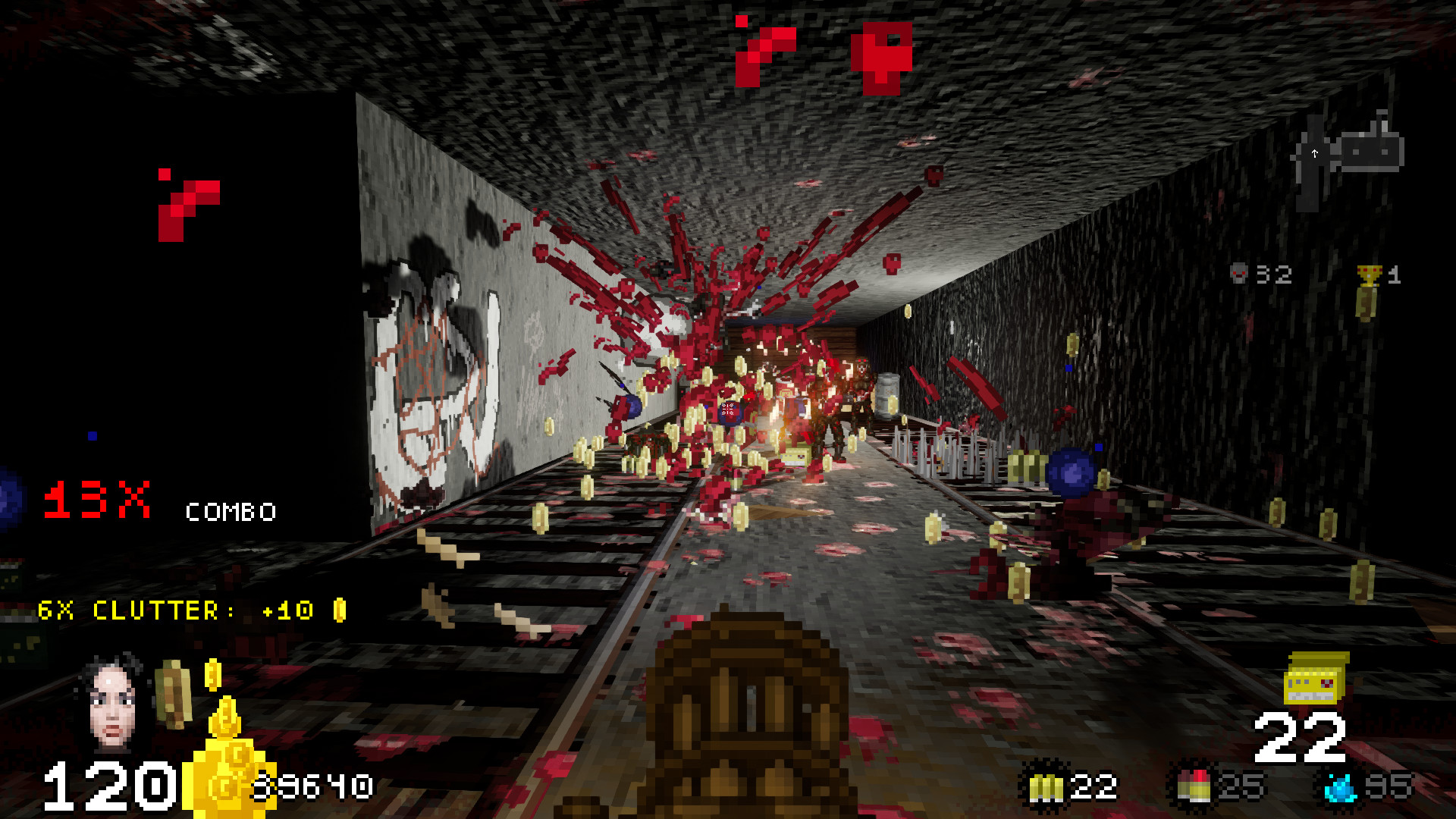Nightmare Reaper aims to be a blend of roguelike and nostalgic throwback to the “boomer shooter” era of Doom. In a sense, it succeeds. It is indeed a roguelike (with procedurally-generated levels and a need to start from scratch with each death), and it has the violence and manic action of those early Doom games.
The developers have done what they intended with it. Unfortunately, while it works, the problem is that this kind of game itself doesn’t really work.
To put it into context: while I was playing Nightmare Reaper, I was also playing Warhammer 40K: Boltgun, another “boomer shooter” that explicitly attempts to capture the heritage of early-era Doom, Hexen and Quake. The major difference between the two is that Boltgun doesn’t feature randomised levels. Instead, it has been carefully pieced together, with every action set piece, secret and trap carefully woven into the experience. Because the levels were designed, the developers knew how the players would move through them, and could craft the challenges in kind, and this allowed the developers to provide a finely honed and taut action game with just the right ebbs and flows to be both thrilling and absorbing.
The developers of Nightmare Reaper, meanwhile, opted to cede control of the level design to chaos, and while that sounds like an excellent idea – randomness does mean unlimited levels, after all – the loss of control over the experience is ruinous to most FPSers. There are “runs” in Nightmare Reaper where the random design of levels leaves you with blandly uninteresting spaces to move through. In other cases what the chaos will throw at you will be downright frustrating. Either the wrong items will be randomly dropped into the levels, or you’ll run into the wrong enemies, and your run is pointless from the opening moments.
There are some instances where roguelike design can be applied to the shooter genre: City of Brass from a few years ago did make a red hot go of it. But that game was more designed around a continual combat experience than retro-style FPSers of secrets and monster-filled traps, and even then City of Brass would have benefitted from being a carefully planned experience (for one thing, if it wasn’t so reliant on being a roguelike the developers could have put more effort into the narrative). For something like Nightmare Reaper, I would much rather have seen human creativity surprise and delight me, rather than automation give me endless repeating content to wade through.
Make no mistake, Nightmare Reaper has a lot of content. Something like 100 levels, all up (give or take) and within that, there are around 80 weapons to collect, and Lord knows how many different kinds of enemy to fight. If the quality of what you’re doing doesn’t particularly matter to you, then the quantity in Nightmare Reaper is hard to look past, though speaking personally here I grew tired of the whole experience well before I got even a third of the way in.
As much of it as there is, I did grow tired of the combat even more quickly than I tired of the level design. Enemies move very fast, so when you’re in a room of them the action is frantic, however, the sprites are also poorly drawn and slide across all surfaces as though it were ice. I wasn’t reminded so much of Doom and its visceral grittiness as I was of the dodgy freeware or shareware games that used to be dumped into supermarkets for a couple of dollars way back when floppy disks, and DOS and Windows 3.1/95 ruled the roost. In fact, the game I was most reminded of was an obscure old GBA game, Back Track. That game was notable for being the first FPS on the GBA (and one of the very first handheld FPSers of all, if you ignore the massively limited Faceball 2000 on the Game Boy), but it was really not a great game, and from my distant memory of the thing I remember it playing a lot like Nightmare Reaper did. It was a good example of how a technically impressive idea, or a lot of content, doesn’t necessarily result in a quality video game.
The qualities of the roguelike work in a variety of areas for a wide range of genres. Dungeon crawling RPGs, twin-stick shooters and even strategy games (you all remember FTL, right?) all benefit from the curveballs that random generation throw at players. In all of these genres resource management and character management is enhanced when the player can never be sure what’s coming next.
But shooters are another matter. The truly remarkable shooters achieve that distinction thanks to memorable level design that tests players while also drawing them into a carefully structured rhythm. People remember Doom and Quake almost entirely because of the winding labyrinths, the traps that get sprung on players, and the very carefully-paced way they’ll earn new weapons and slowly feel more empowered themselves.
In theory, a roguelike FPS could work, however, there needs to be a very specific reason to even try. Nightmare Reaper never gives us that reason. It comes across like a game that’s a roguelike purely because that was how an indie developer should shove 100 levels of grind into it. There’s no narrative nor thematic value to it being a roguelike, and in all that randomness, it loses the soul of what makes those games it pays homage to so special.














